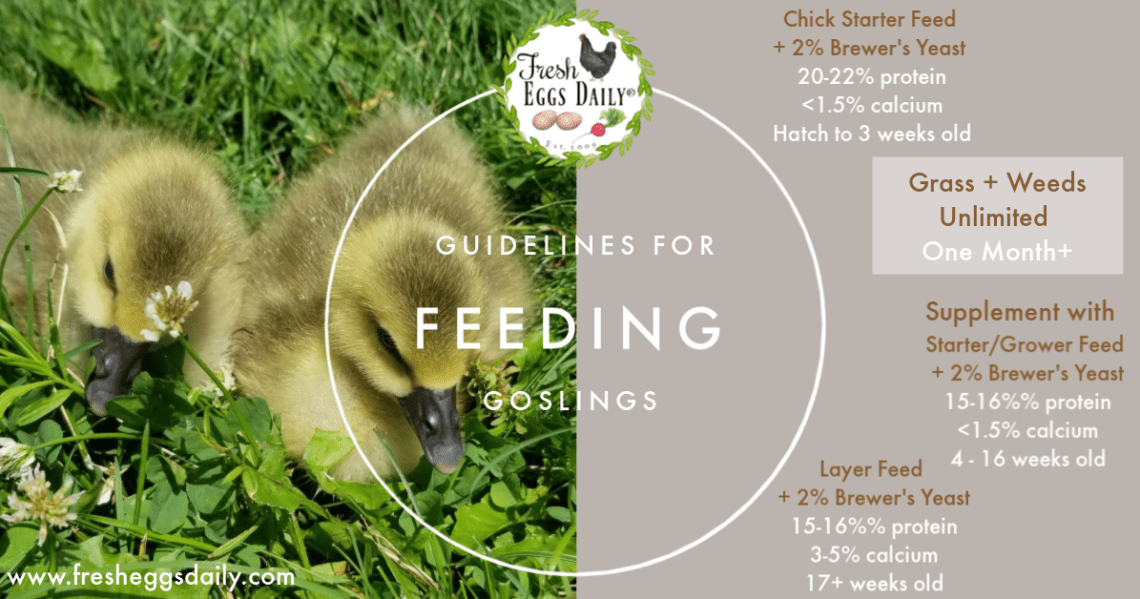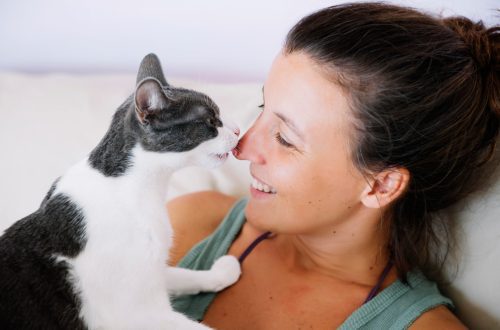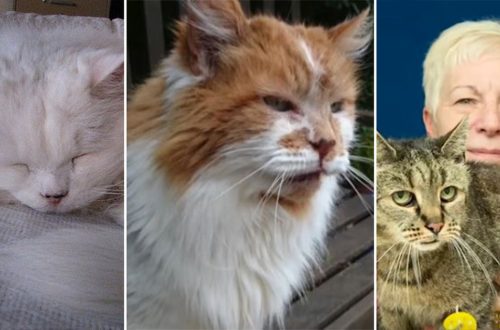
Feeding goslings: how to make a diet with vitamins, requirements for feeders and disease prevention
Feeding is a fundamental factor during such an important and painstaking process as rearing young animals. Thanks to this action, the immune system and health are formed in goslings, the correct weight gain is formed throughout life, the possibility of various diseases and the quality of meat in the future are excluded. Therefore, it is necessary to pay attention to this process and approach this issue with all seriousness in order to obtain the desired results and fruits.
Contents
Feeding newborn goslings
Any newborn gosling, immediately after birth, needs to be fed, and the sooner this process begins, the better for him, since the yolk remaining after birth quickly dissolves. Due to this, the viability and growth of the individual progress in the right direction.
For the first at least 3-4 days of its life, a little gosling should consume food with a number of meals per day of at least 7, and preferably 11-12 times, that is, the interval between feedings should ideally be 2 hours. An excellent option for feeding goslings from the very first days of life will be finely chopped eggs, boiled to a steep yolk consistency, in combination with ground or crushed cereals, such as millet cereals of various types, semolina, corn, wheat, oatmeal and other varieties of cereals.
Excellent performance:
- specialized feed for small geese;
- bran, bread, soaked crackers and crusts;
- all kinds of greens available on the farm, both cultivated and specially grown in the garden, and herbs from fields and meadows;
- the vitamin complex, which goslings urgently need, is contained in elementary finely grated carrots. In the very first days, from the moment of birth, for goslings, the most ideal product in terms of its composition will be crushed peasmixed with fresh and fragrant herbs.
Disease Prevention
Further, in order to prevent various diseases inherent in this family of animals, starting from the 10th day of life, it is recommended to add potassium permanganate to the drink.
If it is not possible to include boiled eggs in the daily diet of pets, this component is easy replace with fresh cottage cheese. Goslings should be fed from specialized tray feeders, the size of which is appropriate for their age.
Completeness of feed and supplements
The further result of weight gain and growth of goslings depends on the variety and usefulness of the feed. The time of buying chicks also plays an important role, because if this took place in early spring, that is, before the first greens and grass appeared in the garden, pets need to be fed, which include the percentage of proteins, in the amount of 2% and, as the animals grow, gradually reduce to the required 16%.
In the future, when the goslings grow up, having reached the age of one month, the feeding ration can be reviewed and replace compound feed with a more budgetary food option, namely – boiled potatoes in combination with chopped carrots, grains, beets and other varieties of root crops. As a binder during feeding, you can safely use low-fat milk, water, whey, fish soup and all kinds of offal decoctions.
Vitamin nutrition
As for vitamin and healthy greens, its part should be predominant and make up at least 50% of the total amount of food eaten by geese during feeding. This useful kind of salad for pets is cut without fail before eating, the particle size should not exceed 15 mm, for easy eating by goslings. It is not recommended to store plucked and even more chopped greens from one feeding to the next, as a huge amount of vitamins is lost as a result.
Quantity and texture of food
Goslings that have reached 7 days of age can safely eat a wide variety of root vegetables, naturally in reasonable quantities, and already from the 21st day – the waste of food consumed by the owners, including boiled vegetables. Initially, it is necessary to avoid the sticky and thick consistency of food, as a result of which the small nasal passages can become blocked and inflamed. As a vitamin supplement, you can add fish oil and yeast cultures to food, useful for the formation of the skeleton – bone meal. In no case should small goslings eat sour or moldy food.
Requirements for feeders and drinkers
Particular attention must be paid to feeding containers, which must meet simple requirements. The most important thing is to be light and very comfortable. From birth, these can be elementary trays, and from 4–5 days trough of wood or other material, as the goslings will trample the food with their paws. Upon reaching the age of one month, you can, without hesitation, replace these containers with feeders intended for adult birds. It is also important that there is always enough fresh and clean water in the drinking bowls, thanks to which the goslings will be able to clean the dirt and rinse the nasal passages without much effort.
Daily routine and diet
During the period of spring and summer warm days, goslings that have reached a week of age are released for a walk with access to grass. If weather conditions do not allow such walks to be carried out systematically, it is necessary to include bone meal, white chalk, all kinds of special mineral supplements and shells ground to the consistency of flour in the feeding ration.
Approximately from the age of one month grown up goslings can be transferred to an unheated room and accustom to water walks, starting with small containers and ending with a lake. If the goal of growing goslings is the fastest weight gain, then it is necessary to forget about grazing for 2–2,5 months and concentrate on enhanced feeding with special saturated compound feeds while adding greens, food waste and vegetable crops, in the amount of half of the amount consumed.
Simple rules for feeding goslings
To achieve an intense meat result from 3 weeks of age, it is necessary to follow the following simple rules when feeding goslings:
- replace one third of cereal-flour fodder with boiled potatoes, possibly with skins and the remnants of their food;
- any mixture used by growing individuals should be thoroughly mixed to a moist and more crumbly consistency than previously;
- the number of feedings per day should be strictly 4 times;
- The last meal before bed should be ground grains or other cereals.
The fattening period of goslings is the complete regrowth of contour feathers on the wings, in other words, fly feathers. After that, it is considered appropriate and correct to leave the only source of food for goslings – grass or greens from the garden, pasture and similar sources.
Raising the immunity of growing goslings
To raise the immunity of birds, it is necessary, both from the first days of life, and for a further time, to use the following remedy, which is a panacea for the caterpillar’s weakened immunity. This remedy is very simple to prepare: in a half-cup of cow’s milk, chicken yolk is released and beat until smooth liquid consistency, adding a pinch of sugar, antibiotics “biomycin” and “penicillin”.
Fluid consumption
It is necessary to monitor the proper amount of fluid consumed by young animals, an insufficient amount of which in the pet’s body can provoke a decrease in weight gain. And the loss, at first glance, of a small amount of water, in relation to body weight, which is 15% or more, can cause illness and further death. For example, a pet that has reached 50 days of age needs 1 liter of clean water or more. In winter and off-season, when there is no possibility of feeding green fresh grass and herbs, it is necessary to replace this food with a combined vitamin silage.
An important role in raising goslings is played by feeding, which must be treated with great care, attention and responsibility, thanks to it, the result will be worthy of the highest praise.





